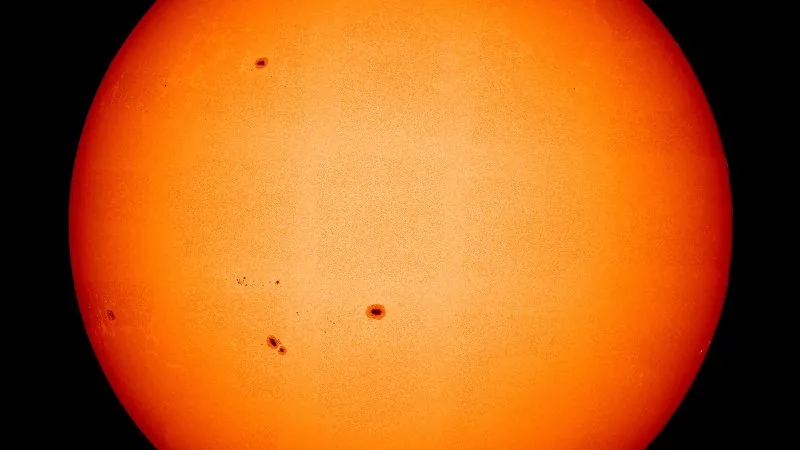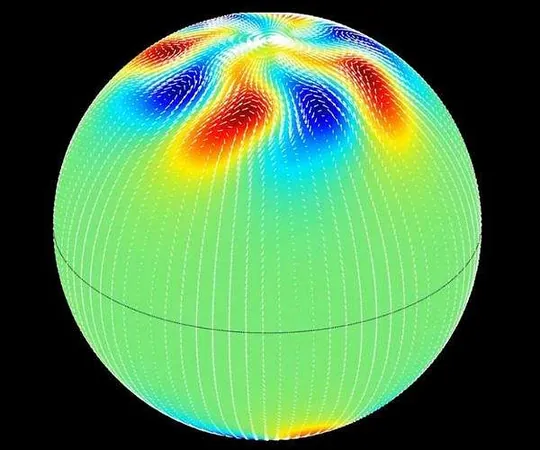
Solar Orbiter's Groundbreaking Images Reveal Surprising Secrets of the Sun!
2024-11-20
Author: Li
Introduction
In an exciting breakthrough for solar research, the Solar Orbiter mission has released stunning new images showcasing the sun's surface like never before. These high-resolution views reveal intricate details of sunspots and dynamic plasma movements, providing heliophysicists with unprecedented insights into our star's behavior.
Imaging Instruments and Mission Details
Captured on March 22, 2023, these cutting-edge images were made possible by two of the Solar Orbiter’s six sophisticated imaging instruments: the Extreme Ultraviolet Imager (EUI) and the Polarimetric and Helioseismic Imager (PHI). Operating from a staggering distance of 46 million miles (74 million kilometers), the spacecraft has a front-row seat to the sun's constantly shifting magnetic fields and the mesmerizing glow of its ultra-hot outer atmosphere, known as the solar corona.
Launched in February 2020 as a collaborative effort between NASA and the European Space Agency, Solar Orbiter orbits the sun at a closer distance than previously possible for any spacecraft. It stands alongside NASA’s Parker Solar Probe, which is set to make its closest approach yet in late December. While Parker Solar Probe dives into the sun's environment without cameras due to its extreme proximity, Solar Orbiter's capabilities allow it to capture vivid images that will shed light on crucial questions surrounding solar dynamics—like the mystery of solar wind acceleration and the perplexing temperature difference between the sun's surface and corona.
Current Solar Activity
Scientists are elated that these missions are taking place during a peak period of solar activity—referred to as solar maximum. Recent announcements from NOAA and other experts have confirmed that the sun is indeed experiencing an uptick in activity, as evidenced by the number of sunspots forming on its surface. This solar maximum period leads to heightened solar flares and coronal mass ejections which have implications for space weather affecting Earth.
Discoveries from the Latest Images
The new images not only offer a close-up view of sunspots—dark features on the solar surface shaped by magnetic fields—but they also help chart the intricate movements of hot plasma within the sun’s convection zone, akin to magma movements beneath the Earth’s crust. The PHI instrument has produced the highest-resolution full views of the sun's visible surface to date, revealing significant temperature ranges from 8,132 to 10,832 degrees Fahrenheit (4,500 to 6,000 degrees Celsius).
Accompanying the surface observations, the Extreme Ultraviolet Imager provides stunning data about the sun's corona, which can reach temperatures of 1.8 million degrees Fahrenheit (1 million degrees Celsius). The juxtaposition between the cooler photosphere and the significantly hotter corona continues to puzzle scientists.
Expert Insights
Mark Miesch, a research scientist at NOAA, emphasized the importance of these groundbreaking images, stating, “The closer we look, the more we see.” With both large-scale and minute details captured, these revelations push the boundaries of our understanding regarding the sun’s complex mechanisms and magnetic interplays.
Implications for Earth and Technology
The implications of this research stretch far beyond casual observation. Increased solar activity can influence Earth-bound technologies; solar flares and coronal mass ejections can disrupt power grids, affect GPS signals, and even spark radio blackouts. They also contribute to the spectacular auroras we see at the polar regions.
Looking Ahead: Upcoming Space Missions
As anticipation builds for the Parker Solar Probe's historic flyby—set to come within an astonishing 3.86 million miles (6.2 million kilometers) of the sun—scientists are eager to uncover the direct origins of space weather phenomena resulting from the sun's activity.
Conclusion
These monumental advances in solar observation signify a thrilling chapter for astrophysics, one that promises to unlock secrets of our sun, and by extension, our solar system. Stay tuned as we continue to explore the universe's mysteries!




 Brasil (PT)
Brasil (PT)
 Canada (EN)
Canada (EN)
 Chile (ES)
Chile (ES)
 España (ES)
España (ES)
 France (FR)
France (FR)
 Hong Kong (EN)
Hong Kong (EN)
 Italia (IT)
Italia (IT)
 日本 (JA)
日本 (JA)
 Magyarország (HU)
Magyarország (HU)
 Norge (NO)
Norge (NO)
 Polska (PL)
Polska (PL)
 Schweiz (DE)
Schweiz (DE)
 Singapore (EN)
Singapore (EN)
 Sverige (SV)
Sverige (SV)
 Suomi (FI)
Suomi (FI)
 Türkiye (TR)
Türkiye (TR)